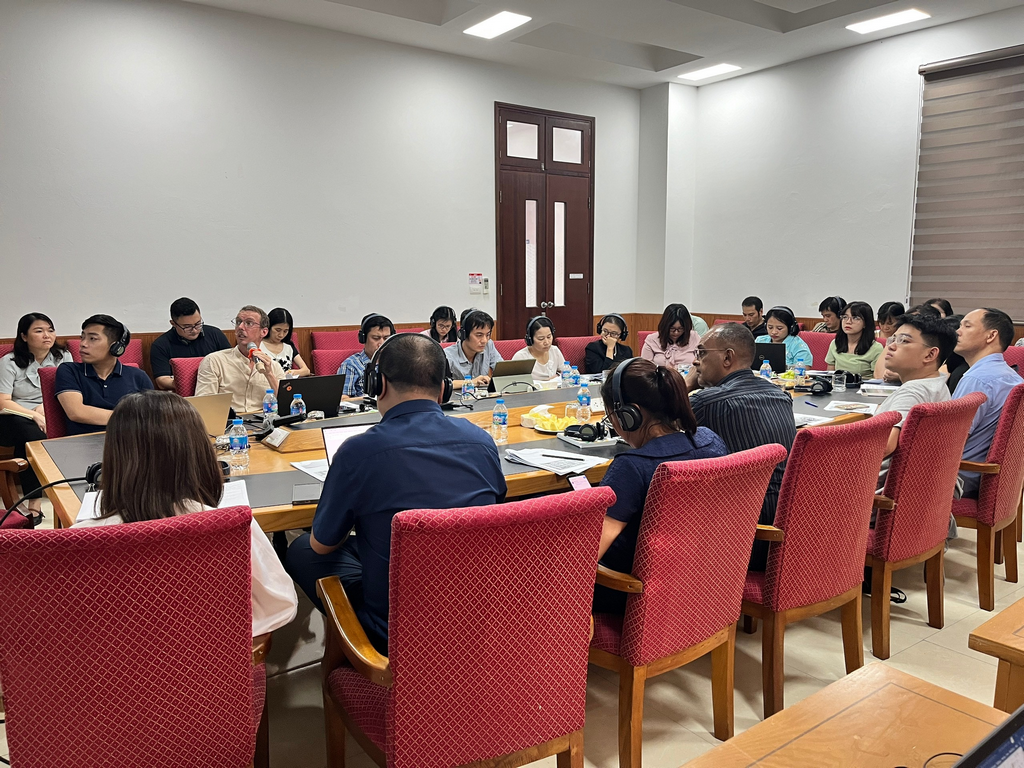The meeting attracted the interest of more than 35 researchers and representatives from the National Institute of Nutrition, Vietnam Academy of Agricultural Sciences, IPSARD, Bioversity-CIAT Alliance, Vietnam Agricultural Environment Institute, Vegetable Research Institute, Institute of Market Institutions and Development, Institute for Industry and Trade Strategy and Policy, and other research organizations.

At the meeting, Dr. Truong Thi Thu Trang - Vice President of IPSARD, Assoc. Prof. Dr. Dao The Anh - Deputy Director of VAAS, and Assoc. Prof. Dr. Truong Tuyet Mai - Vice President of NIN shared and spoke about the importance of research on the food environment in Vietnam, as well as the need for interdisciplinary interventions to improve the food environment, thereby creating positive impacts that promote healthy diets for future generations in Vietnam, especially the youth – a group that is frequently exposed to a variety of unhealthy food sources. Particularly, to successfully implement interventions, coordination is needed between ministries, local governments, and individuals in the food environment.



Mr. Brice, head of the Food Environment and Consumer Behavior Research Group - representative of research component 3 of the SHiFT initiative in Vietnam - Bioversity International & CIAT, presented on "Overview of Concepts and Definitions of the Food Environment," in which "the food environment" is an integral part of the food system, where consumers interact with the food system to make purchasing, processing, and consumption decisions. People interact with the food environment daily to obtain the food they desire (Hawkes et al., 2015; FAO, 2016; HLPE, 2017; Turner et al., 2018; UNSCN, 2019). Research on the food environment has mainly been conducted in high-income countries to address the increasing rates of obesity and non-communicable diseases. The concept of the food environment originated from nutrition and public health research, but its significance has expanded to food system research and food system sustainability. There is currently very little research on the food environment in low- and middle-income countries (Turner et al., 2020; Glanz et al., 2005; Downs et al., 2020). Food systems and food environments that do not promote healthy diets are considered a potential cause of malnutrition. Vietnam and many other countries worldwide are facing an alarming increase in childhood obesity, especially in large cities like Hanoi and Ho Chi Minh City. This is due to many factors, primarily stemming from daily eating habits. Diet is both a result and a factor influencing the food system. Therefore, it is crucial to recognize that (i) the food environment affects the diet, and (ii) the diet also affects the food system, making intervention at the food environment level necessary.

There are six areas within the food environment that need attention and intervention to impact healthy diets: i) Food availability and accessibility; ii) Food prices and affordability; iii) Food product characteristics; iv) Features of food sales locations; v) The desirability, acceptability, and convenience of food; vi) Food marketing. The conceptual framework for these areas was discussed among experts and researchers. Based on the framework and the knowledge shared, two groups of researchers and participants at the meeting practiced and discussed current issues that adolescents are facing in their daily diets, and several intervention solutions were proposed to address related issues and promote healthy diets for this age group, such as: i) Developing standards for healthy food, establishing regulations and standards for food sales points near schools; ii) Specific regulations and sanctions for violations at food sales points, requiring restrictions on unhealthy food products; iii) Managing food supply sources (suppliers); iv) Researching solutions for imposing special consumption taxes on unhealthy foods, reviewing and amending advertising laws to limit unhealthy food ads, etc.

Group 1: Practice and discussion.

Group 2: Practice and discussion.
The meeting ended with many positive responses from participants and a proposal to continue bringing similar specialized topics for discussion and dissemination to stakeholders to promote healthy diets towards sustainable health.